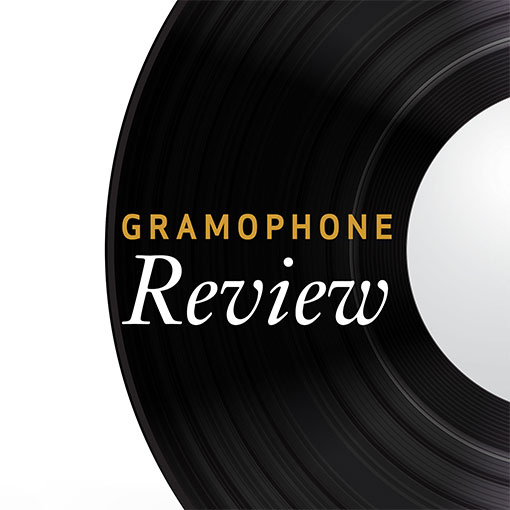Beethoven Symphonies
View record and artist detailsRecord and Artist Details
Composer or Director: Ludwig van Beethoven
Label: Reflexe
Magazine Review Date: 9/1988
Media Format: Vinyl
Media Runtime: 0
Mastering:
DDD
Catalogue Number: EL749746-1

Tracks:
| Composition | Artist Credit |
|---|---|
| Symphony No. 1 |
Ludwig van Beethoven, Composer
London Classical Players Ludwig van Beethoven, Composer Roger Norrington, Conductor |
| Symphony No. 6, 'Pastoral' |
Ludwig van Beethoven, Composer
London Classical Players Ludwig van Beethoven, Composer Roger Norrington, Conductor |
Composer or Director: Ludwig van Beethoven
Label: Reflexe
Magazine Review Date: 9/1988
Media Format: Cassette
Media Runtime: 0
Mastering:
DDD
Catalogue Number: EL749746-4

Tracks:
| Composition | Artist Credit |
|---|---|
| Symphony No. 1 |
Ludwig van Beethoven, Composer
London Classical Players Ludwig van Beethoven, Composer Roger Norrington, Conductor |
| Symphony No. 6, 'Pastoral' |
Ludwig van Beethoven, Composer
London Classical Players Ludwig van Beethoven, Composer Roger Norrington, Conductor |
Composer or Director: Ludwig van Beethoven
Label: Reflexe
Magazine Review Date: 9/1988
Media Format: CD or Download
Media Runtime: 66
Mastering:
DDD
Catalogue Number: 749746-2

Tracks:
| Composition | Artist Credit |
|---|---|
| Symphony No. 1 |
Ludwig van Beethoven, Composer
London Classical Players Ludwig van Beethoven, Composer Roger Norrington, Conductor |
| Symphony No. 6, 'Pastoral' |
Ludwig van Beethoven, Composer
London Classical Players Ludwig van Beethoven, Composer Roger Norrington, Conductor |
Author: Richard Osborne
The first movement is more difficult to bring off and it is a measure of the competence and confidence of the London Classical Players that the difficult slow introduction is brought off with superb aplomb and that the
As a performance it is not dissimilar to Hogwood's on L'Oiseau-Lyre but both the reading itself and the playing have more variety, more musical flair. Indeed, this must be counted one of the best accounts of the First Symphony we have had
The Pastoral is also a revelation, a performance as joyous and fascinatingly elucidated as any since Toscanini's classic BBC SO recording made half a century ago (EMI EX290930-3, 2/87—a three LP set). Naturally, Norrington adopts a swift tempo in the joyous first movement but there's no hint of that relentless, driven quality which we have sometimes had on record from seekers after metronomic rectitude like Paul Paray (Mercury— nla). Norrington is fully up to tempo in the vibrant tuttis, elsewhere he's most careful to allow the music to expand and dance and breathe the transitions always most sensitively moulded. tike Toscanini, he opens out the string textures to allow through a mass of detail, some of it motivic some of it there solely for our delight and delectation, like the rich viola skirls in the Shepherds' Song. Horns have a rasping, alfresco sound, the playing wonderfully uninhibited; and yet the strings' delivery of the important repeated anapaests in the first movement coda is a model of musical control.
It is also a joy to hear this, of all the Beethoven symphonies, on period instruments: the mellow flute at the end of the ''Scene by the brook'', the earthy bassoon giving out not only his drowsy three- and four-note phrases in the scherzo but also the much longer nine-bar piece of musical somnambulism which often goes unheard and unnoticed. It is good to hear trumpets that really do set the scherzo ablaze and wonderful drum thwacks in the Storm. The new instrumental timbres will come as a revelation to many listeners, equally, they are obviously a source of real joy and fascination to the players. I suppose we have all heard the Pastoral once or twice too often; certainly the woodwinds of some big international orchestra, or the timpani in the Storm must find all the tone-painting slightly old hat at the thousand and first performance. But that is not the feeling you get here; this Pastoral is a real voyage of aural discovery.
It is true that modern instruments make for balmier sounds in the ''Scene by the brook''. Here there are some quaint country ululations, a few rank weeds on the river bank and the odd bevy of gnats in the air. Sometimes the wind tuning is not 100 per cent true, at others it is simply a matter of Norrington teasing us with the timing of a trill's release or pointing up dissonances that usually get smoothed over. As Coleridge wrote, and Beethoven would have agreed, ''No sound is dissonant which tells of life''.
Some people have expressed reservations about the recording of this orchestra in Abbey Road's No. 1 Studio; but I find the sound wonderfully clear and trenchant. How marvellous it is at the start of the last movement of the Pastoral to have such clean, honest string sound and to have it spread right across the orchestral spectrum as the first and second violins answer one another antiphonally across the landscape. All in all, this is another major success in a Beethoven cycle whose interest currently seems to know no bounds.'
Discover the world's largest classical music catalogue with Presto Music.

Gramophone Digital Club
- Digital Edition
- Digital Archive
- Reviews Database
- Full website access
From £8.75 / month
Subscribe
Gramophone Full Club
- Print Edition
- Digital Edition
- Digital Archive
- Reviews Database
- Full website access
From £11.00 / month
Subscribe
If you are a library, university or other organisation that would be interested in an institutional subscription to Gramophone please click here for further information.





